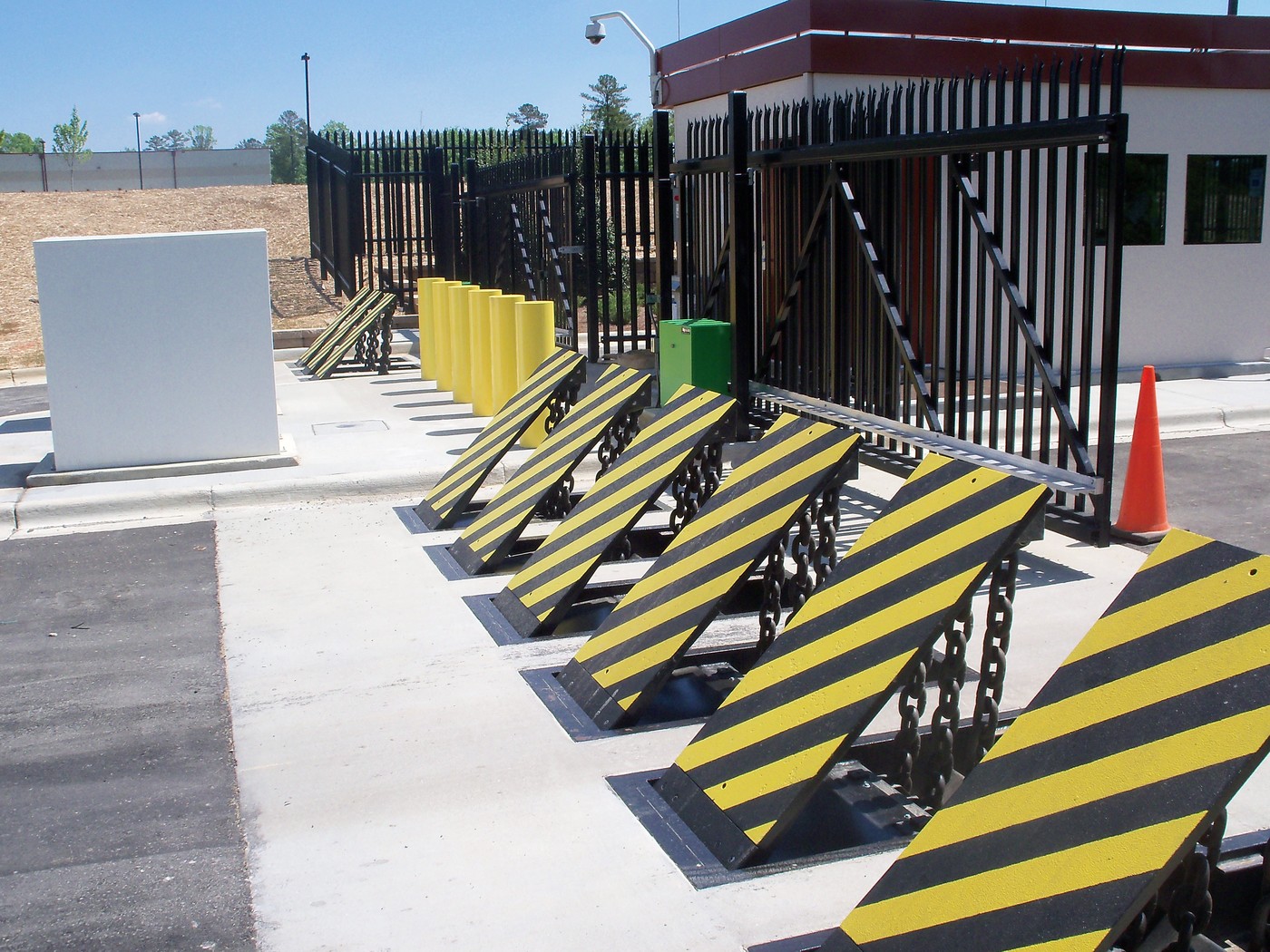Everything about Wedge Barriers
Table of ContentsSome Known Factual Statements About Wedge Barriers Get This Report about Wedge Barriers

The Best Guide To Wedge Barriers
g., spring support 65 )may be taken care of to completion of the springtime rod 58 to enable compression of the springs 60. As the springs 60 are compressed between the spring supports 62, the spring setting up 54 produces a force acting upon the web cam combined to the springtime pole 58 in an instructions 66. As an example, the staying pressure related to
the webcam to release the wedge plate 16 may be provided by an electromechanical actuator 84 or various other actuator. As such, the spring setting up 54 and the actuator 84(e. g., electromechanical actuator)might operate with each other to equate the cam and lift the wedge plate 16.
As stated over, the spring setting up 54 exerts a continuous force on the camera, while the electromechanical actuator may be regulated to put in a variable pressure on the webcam, consequently enabling the lifting and reducing( i. e., releasing and retracting )of the wedge plate 16. In specific personifications, the continuous force applied by the springtime setting up 54 may be adjustable. g., electromechanical actuator) is impaired. As will be appreciated, the spring setting up 54 might be covered and secured from debris or various other components by a cover plate(e. g., cover plate 68 displayed in FIG. 4) that may be significantly flush with the elevated surface 38 of the structure 14. As mentioned over, in the deployed setting, the wedge plate 16 serves to obstruct gain access to or traveling past the barrier 10. The barrier 10(e. g., the wedge plate 16 )may block pedestrians or automobiles from accessing a building or pathway. As gone over above, the barrier 10 is connected to the support 30 secured within the structure 14,

front braces 71. Therefore, the link settings up 72 may pivot and rotate to enable the collapse and extension of the affiliation assemblies 72 during retraction and implementation of the go to my site bather 10. The linkage assemblies 72 reason activity of the wedge plate 16 to be limited. For example, if an automobile is taking a trip in the direction of the released wedge plate 16(e. For instance, in one scenario, the safety and security legs 86 might be extended duringmaintenance of the barrier 10. When the security legs 86 are deployed, the safety legs 86 support the weight of the wedge plate 16 against the surface 12. Therefore, the training device 50 might be shut off, serviced, eliminated, replaced, and so forth. FIG. 5 is partial perspective sight of an embodiment of the surface-mounted wedge-style obstacle 10, showing the cam 80 and the cam surface areas 82 of the training system 50. Especially, 2 camera surface areas 82, which are referred to as lower cam surface areas 83, are positioned below the cam 80. The reduced camera surfaces 83 might be fixed to the surface area 12 (e. For instance, the lower cam surface areas 83 and the placing plate 85 might develop a single item that is protected to the anchor 30 by screws or other mechanical fasteners. In addition, 2 webcam surfaces 82, which are described as upper cam surfaces 87, are positioned over the camera 80 and combined to (e. In other personifications, interfering layers or plates might be positioned in between the surface 12 and the reduced camera surfaces 83 and/or the wedge plate 16 and the upper cam surface areas 87 As pointed out above, the camera
80 translates along the web cam surface areas 82 when the wedge plate 16 is lifted from the retracted setting to the deployed placement. Additionally, as pointed out above, the springtime assembly 54 (see FIG. 3 )might offer a pressure acting upon the web cam 80 in the direction 102 using spring pole 58, which may decrease the force the learn the facts here now electromechanical actuator 84 is needed to put on the camera 80 in order to actuate and lift the wedge plate 16. 1 )to the released placement(see FIG. 4). As visite site shown, the web cam 80 consists of track wheels 104(e. g., rollers), which get in touch with and convert along the webcam surfaces 82 throughout operation.